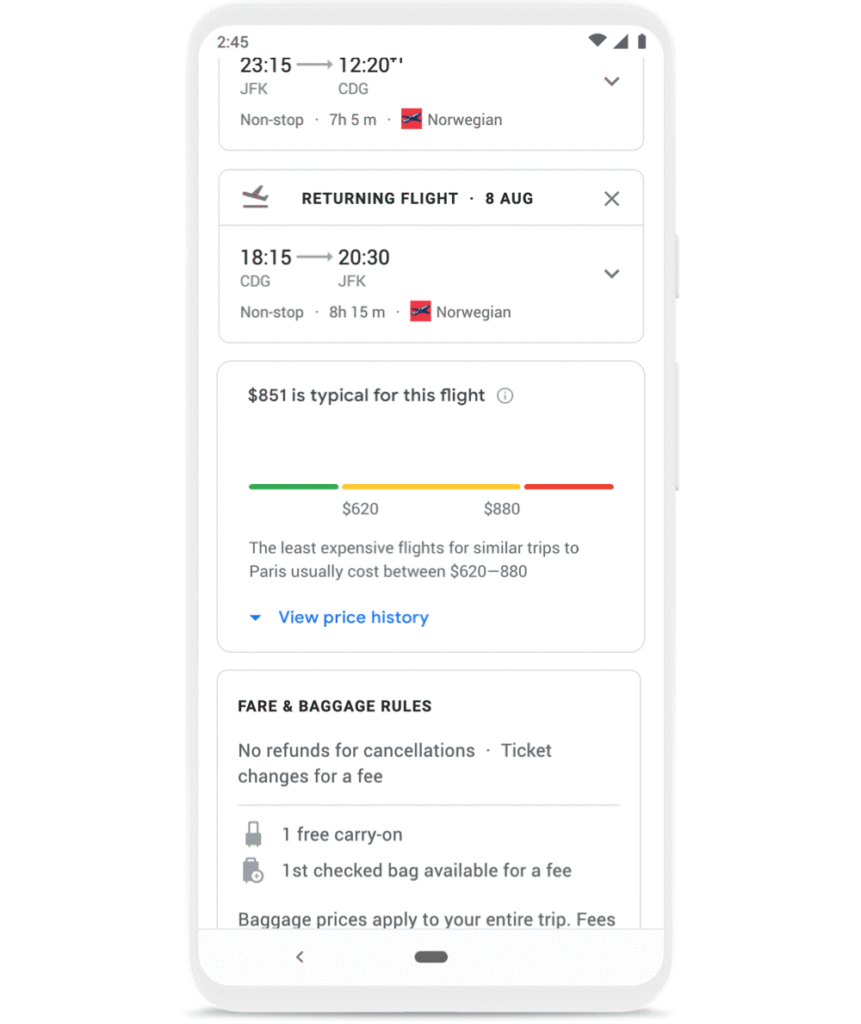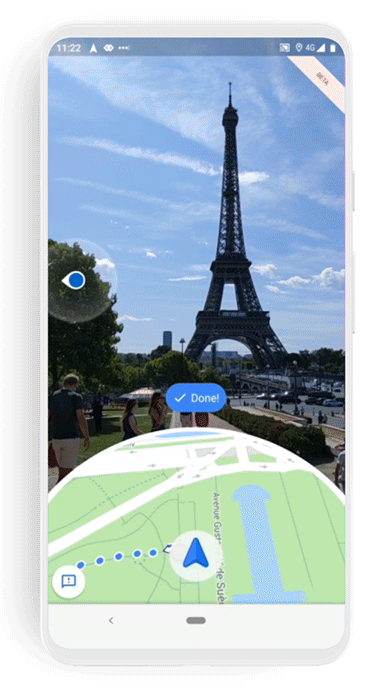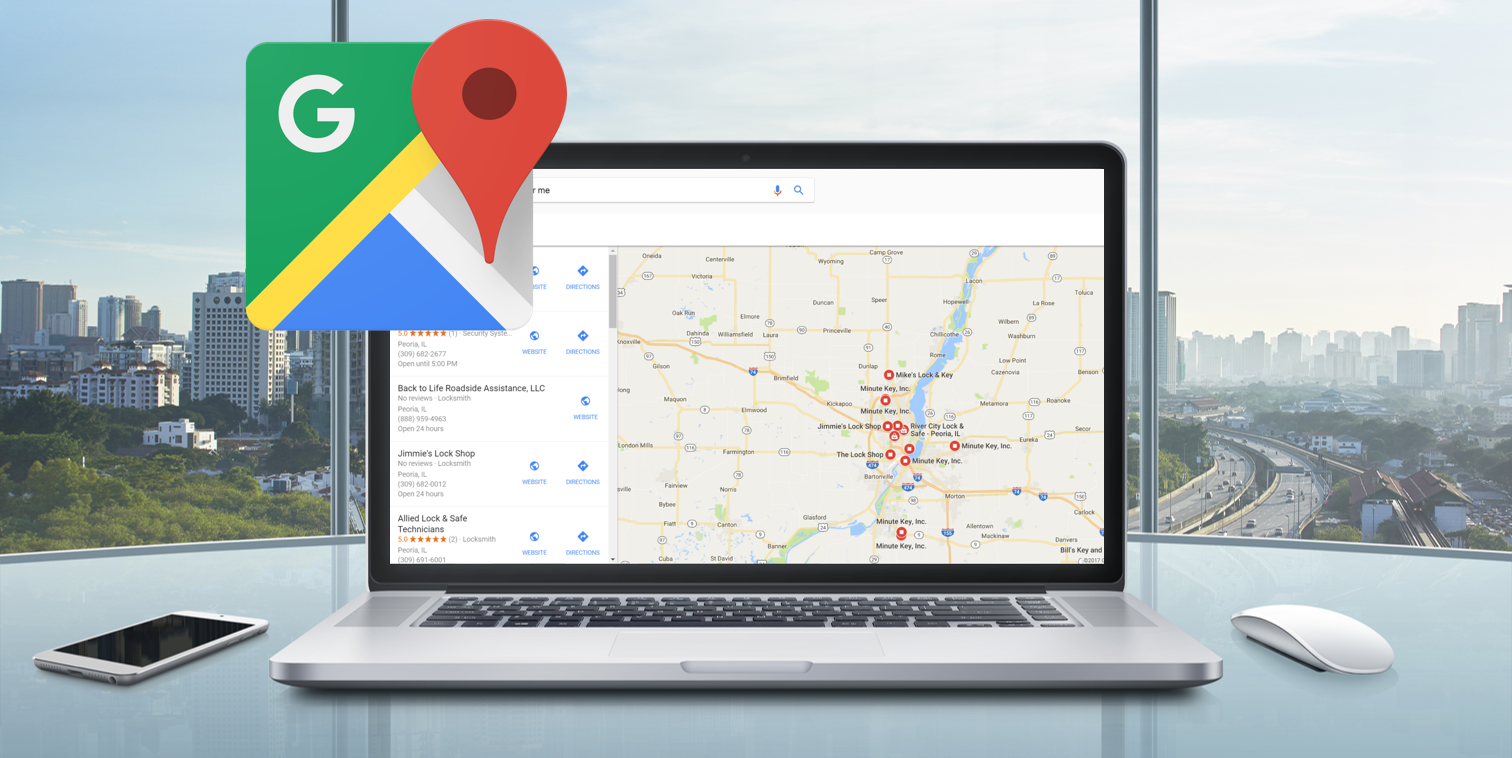Google wants to be the first and last place you go for Labor Day travel planning—and for every day travel planning. The search giant previously said goodbye to the Google Trips app and moved travel booking to Google Travel. Now, Google has announced more features for its Travel product, adding to the depth of capabilities and likelihood to increase app engagement. Here’s a quick overview of Google’s updates.
Guaranteed pricing predictions
Google Flights has gained more detailed fare tracking capabilities beyond whether a flight route’s current price is high, medium or typical compared to average costs. Travelers can now see those cost assessments against the actual itinerary being considered for booking. According to Google, for “some flights,” the app will show how the cost has changed over recent months and notify the user if the algorithm suggests the price is about to increase or if it’s at rock bottom.
We’ve seen other fare predictors gone wrong before, but Google is guaranteeing pricing accuracy today through September 2 to earn user confidence. Here’s how it works: If Google predicts the fare won’t decrease for select itineraries originating in the U.S. and booked between those dates, but it does drop, they’ll notify the user and refund the difference. Just use your Gmail to receive your flight confirmation, and the upcoming trip will flow into the app and can be seen at google.com/travel.


Consolidated and expanded features
The new functionality includes Google Maps’ Your Places with destination guides; recommendations and booking for hotels, restaurants and entertainment; reservation tracking across travel providers; and combined itineraries. Of course, you’ll stick with Maps in order to navigate when you reach your destination. The beta feature, Live View, uses augmented reality, or AR, on supported devices to overlay arrows, directional signage and instructions onto the actual view in front of the user as they walk.


Want to be a travel influencer? The Google Timeline update lets you search your location history and share your list of visited destinations including shops, restaurants and other places. These businesses can then be part of your own city guide to share with your contacts. Make the guide public on Google Maps’ Explore for anyone to use.
Advertising opportunities
Google is right to drive users—and subsequently, advertisers—to its Travel products. Right now, travel is the sixth largest U.S. industry for ad spending, according to newly released eMarketer data. Rapid increase in travel, and competition by travel providers, results in increased advertising as a means of gaining market share. And, search advertising is practically a requirement for competing locally or nationally for travel spend. In fact, it makes up almost 11 percent of all search advertising investments across measured industries. Display and video are also gaining. Video spend for travel-related ads is anticipated to jump about 27 percent this year alone, although much of this is driven by social media, especially Instagram and Facebook.
Want to learn more about advertising with Google? Contact Mindstream Media Group to find out how our search marketing solutions can amplify your brand’s presence.


![[Video]: Taking Control of Your Presence on Google](https://mindstreammediagroup.com/wp-content/uploads/2017/05/Local-search-video-featured-image.png)
